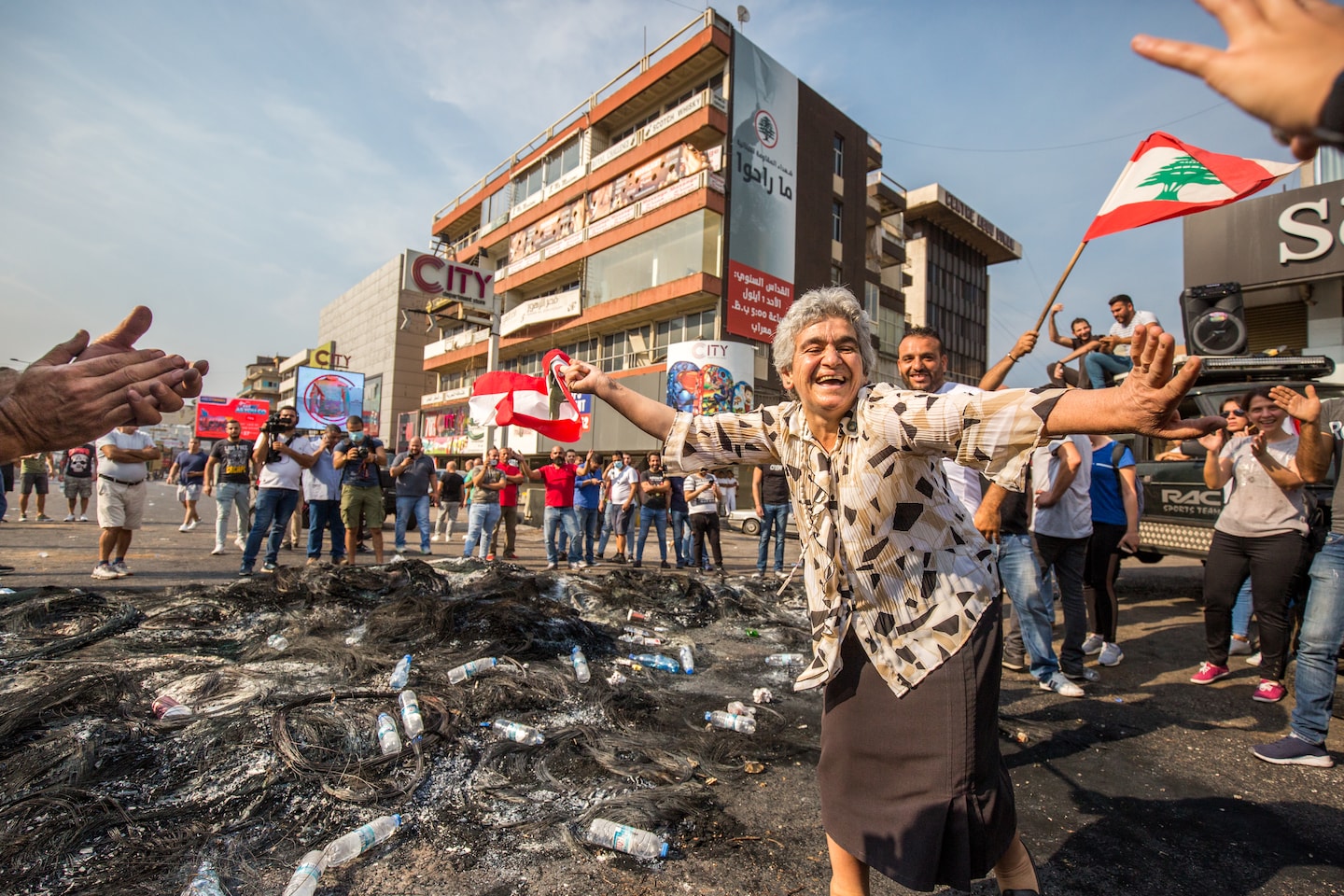Art review: “Lebanon Then and Now: Photography From 2006 to 2020” at the Middle East Institute
[ad_1]
The display is set up as a simulated 3-D walk-through of MEI’s gallery, in which you can view the works as if installed on the walls in dialogue with each other, or click on individual pieces to see them up close and read the descriptions. (Although it can be viewed on a cellphone, viewing in full-screen mode on a computer offers the best experience; proceed counterclockwise from the introductory panel.)
The show features work by 17 contemporary photographers and one filmmaker, most of them relatively unknown to U.S. audiences. The works vividly convey the turmoil and tragedy that have beset Lebanon for decades — of which the port blast is only the latest chapter — while also portraying the Lebanese people’s perseverance.
“Lebanon Then and Now” brings together works that previously appeared elsewhere in two exhibitions last year: “Lebanon: Between Reality and Fiction,” at the Arab World Institute in Paris; and “Revolt,” organized by the Beirut Center of Photography (BCP) and the Association for the Promotion and Exhibition of the Arts in Lebanon (APEAL).
Predating the photographs by several decades, Italian filmmaker Tanino Musso’s 22-minute short film “Beirut Centre Ville” (“City Center Beirut”) serves as a historical scene-setter. (It can be also accessed separately, via the exhibition’s homepage.) It follows several major 20th-century photographers — including Robert Frank, René Burri and Gabriele Basilico — who were invited in 1991 to document the destruction of Beirut during the 1975-1990 civil war.
Shot on 8-millimeter video, the un-narrated, fly-on-the-wall footage of the men at work shows ravaged and abandoned buildings, pockmarked streets and deteriorating wreckage, overlaid with an evocative soundtrack of Middle Eastern guitar solos, a Fairouz song and the Islamic call to prayer.
The ruined cityscapes in Musso’s film feel unsettlingly familiar in light of recent images of Beirut neighborhoods that had been rebuilt and were damaged again in this month’s explosion. In one shot that now takes on an eerie significance, Basilico, his camera tripod slung over his shoulder, walks in front of the enormous 1968-built grain silos that were at the center of the blast.
The seven photographers selected from the Paris show, six of whom are women, embrace both realistic and more stylistic approaches. Especially poignant are three portraits in Dalia Khamissy’s series “The Missing of Lebanon,” of solitary older women posing with photos of male family members who are among the estimated 17,000 people who remain missing from the civil war.
Two works from Lamia Maria Abillama’s “Clashing Realities” series portray women sitting in elegant living rooms, incongruously dressed in military camouflage, in a statement on the pervasiveness of violence in recent Lebanese history. Maria Kassab’s more surreal pieces in “The Shipwreck” digitally collage cutouts of deep-blue ocean water with scenes from empty living spaces, suggesting a sense of unmooring.
Most of the photographs selected from “Revolt” originally went on view about a month after the Oct. 17, 2019 start of massive protests in Lebanon. What has come to be known as the “October Revolution” was triggered by a government proposal to increase taxes amid an economic crisis and the precipitous devaluation of the Lebanese pound. The photos were mounted as a large-format open-air installation in downtown Beirut that chronicled and became a part of the atmosphere of the demonstrations, and new images were added over subsequent months.
“It provides a testimonial for people who can’t be here, to feel the anger . . . the kind of absolute carnival of discontent that we witnessed when we first mounted the ‘Revolt’ exhibit,” says Nora Boustany, a board member of APEAL (and a former Washington Post correspondent), in a webinar organized by MEI.
The photos capture with great immediacy the built-up outrage and frustration with Lebanon’s government that have reemerged in recent weeks as Lebanese protest in the wake of the deadly explosion. Some are also strikingly similar to scenes of demonstrations against police violence in the United States this summer.
Among the most powerful images are: Jana Khoury’s picture of youths, some wearing Guy Fawkes masks, standing around street bonfires; Jack Seikaly’s shot of riot police forcefully lifting a protester off the ground; and Emilie Madi’s portrait of an older woman wearing a headscarf and hoisting two Lebanese flags across her shoulders.
Not everything is bleak. A highlight that is easy to overlook because of its placement on the introductory panel is “The Lovers in Times of Revolution,” Omar Sfeir’s homage to René Magritte’s painting “The Lovers.” In Sfeir’s version, taken during the October protests, an anonymous couple embrace and kiss through the fabric of a Lebanese flag wrapped around their heads.
“The kiss concealed with the Lebanese flag is a token of defiance,” Omar says in the webinar. “I wanted to give hope to everyone who still believes in this country as much as I do.”
